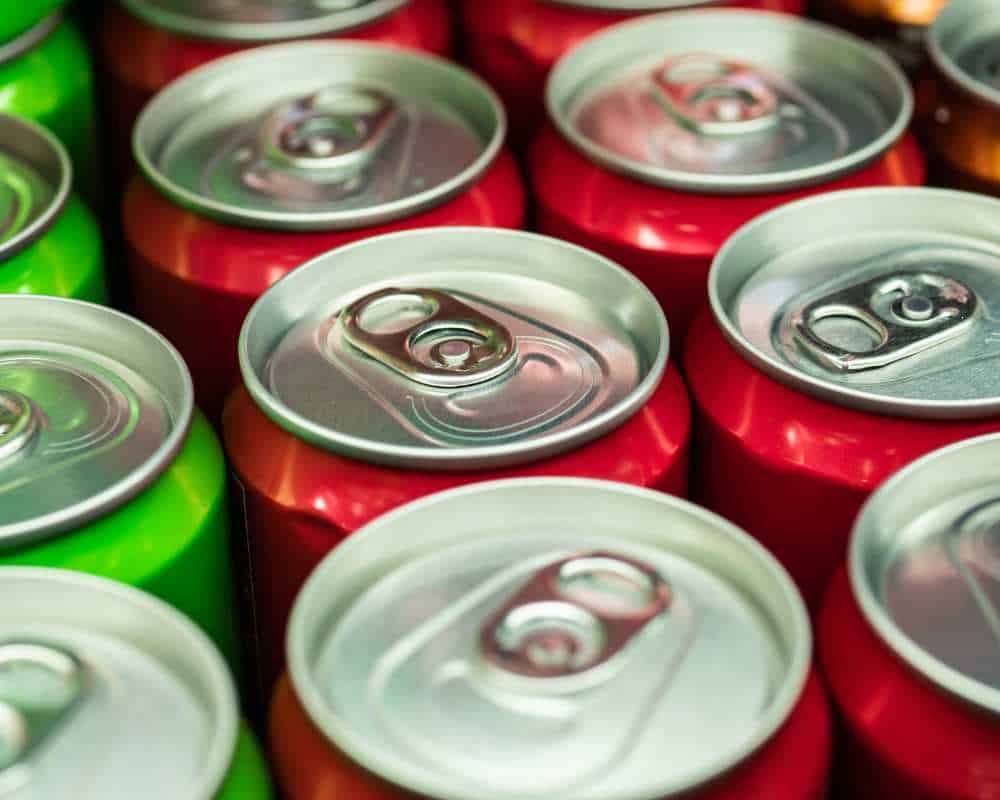Burning is bad. We can all be sure of that. Not only can sunburn be painful, but some studies show that the cumulative number of sunburns over a lifetime can be associated with melanoma. But the sun can also be beneficial. Sun exposure prompts the body to create Vitamin D, which has been shown to help protect against numerous health concerns like certain types of cancer, multiple sclerosis, and depression (source).
So, what is the best way to protect yourself and your family from too much sun while still responsibly enjoying it’s benefits? Let’s take a look at some Do’s and Don’ts based on research.
1. Don’t Be a “Solar-Phobe”

Dr. Robert S. Stern, chair of the Department of Dermatology at a Harvard-affiliated medical center describes “solar-phobes” as people who are so fearful of the sun that they avoid it completely. They stay indoors and cover up entirely when they must go outside. Many professionals like Dr. Stern encourage finding a healthy balance between sun-worship and sun-fear (source). In short, they encourage us to enjoy the sun and take in healthy amounts of sunlight without overdoing it.

Furthermore, the Journal of Internal Medicine found that people who avoid sun exposure reduced their life expectancy by 0.6-2.1 years, which is a reduction similar to smoking. They particularly point out that the sun exposure group experienced less death due to cardiovascular disease. Remember, heart disease is the leading cause of death in the U.S.
2. Don’t Use Mainstream Sunscreen

Just about every dermatologist out there will preach the necessity of wearing sunscreen everyday. However, we can’t deny the fact that according to JAMA, both the incidence AND mortality from invasive melanoma have increased steadily over the past 20 years. And other studies like this one and this one are finding that even though sunscreen usage has increased over the last couple of decades, so has melanoma. You can see the comparisons from JAMA Dermatology’s 2016 article in the charts below. So, what’s the deal?



These concerned dermatologists may not be explaining everything we need to know about sunscreen. In actuality, some signs point to the type of sunscreen being the problem. You see, most mainstream sunscreens are chemical sunscreens.
Dr. Taylor Bullock, MD, who is a dermatologist for the Cleveland Clinic explains, “Chemical sunscreens provide sun protection by absorbing the sun’s rays and preventing them from reaching the skin.” (source) What chemicals are in the sunscreen to provide the sponge-like ray absorption? The most common chemicals you’ll find on the sunscreen aisle are avobenzone, oxybenzone, and octinoxate.
However, in 2019 the FDA (Food and Drug Administration) declared that additional safety data was needed for 12 active ingredients commonly found in sunscreens, including these 3 mentioned above. The other questionable 9 chemical ingredients they cited are cinoxate, dioxybenzone, ensulizole, homosalate, meradimate, octisalate, octocrylene, padimate O, sulisobenzone (source). The FDA reported that some of these chemicals could still be detected in the blood weeks after application. Research supports their concern regarding the chemicals lingering in the bloodstream.

Could these sunscreen chemicals in the bloodstream be a problem? Definitely! The Cleveland Clinic cautions that, “Long-term exposure to benzene can lessen your ability to fight off infection and lead to fertility issues, anemia and leukemia.” (source). The NIH’s National Cancer Institute agrees and classifies benzene as a “known carcinogen”, meaning it is known to cause cancer and other blood disorders (source).
Dr. Elizabeth Plourde, a Clinical Laboratory Scientist and the author of a book about the dangers of sunscreens explains that not only do most sunscreens not prevent cancer, they actually promote them. She explains, “They tell you to put it (sunscreen) on every hour or two hours. If you keep putting that on your skin over and over again all summer long, you’re putting massive amounts of chemicals on your body. Your skin absorbs it. They try to say, ‘You don’t absorb it.’ That’s not true. They find it in the kidneys, the liver, the brain, and the testicles. They find these chemicals everywhere throughout the body and then try to say that you’re not absorbing them.” (source).
In addition, some people with sensitive skin can not use chemical sunscreens due to allergic reactions from the chemical sunscreen ingredients.
3. Find Clean Mineral Sunscreens (or Make Your Own)

Mineral sunscreen is one way to avoid the harmful chemicals mentioned above. Dr. Bullock from the Cleveland Clinic points out that whereas chemical sunscreens absorb UV radiation, mineral sunscreens are more of physical sunscreens. They sit on top of the skin. She says, “Mineral sunscreens are composed of minerals and protect the skin by reflecting ultraviolet light from the sun.” (source)
Another benefit of mineral sunscreen is explained in an NBC interview with Dr. Anthony Rossi, a board-certified dermatologist at Memorial Sloan Kettering Cancer Center. He says, “Unlike chemical sunscreens, mineral sunscreens are naturally broad spectrum, meaning they offer protection against UVA and UVB rays as a baseline, no matter which brand or variation you buy.” Then he further explains, “Both UVA and UVB rays come from the sun and cause DNA mutations that are signatures in skin cancers and skin aging.” So, if you’re looking for broad-spectrum protection from both UVB and UVA rays, many dermatologists would favor mineral sunscreen.
One caution with mineral sunscreens…Many mineral sunscreens found in stores will contain either nano-zinc oxide or titanium dioxide. But Dr. Plourde warns that certain types of zinc oxide and titanium dioxide are worrisome. She stresses, “They’re very bad. They go to the brain. For it not to be a white paste, they bring it down in size to trick the eye so it doesn’t see it. That’s down to nano and micro size.” (source)
Nobody wants suncreen that leaves a white cast, so what’s the concern with nano-sized particles of zinc oxide? Some studies are finding that it can cross the blood-brain barrier (source). Therefore, the best mineral sunscreen option would contain non-nano zinc oxide.
Want to see 10 non-nano, clean mineral sunscreen recommendations? Don’t miss this list.
4. “Eat Your Sunscreen” A.K.A. Foods that Offer Sun Protection

Did you know that the foods you eat can actually protect you from the harmful aspects of sun exposure? It’s true. So, if you want to enjoy the benefits of the sun without harm, check out these foods.
Green Tea– Research has found that Green Tea contains polyphenols that promote rapid DNA repair. This rapid repair has been shown to prevent UVB-caused skin tumors. Because Green Tea showed anti-photocarcinogenic activity, researched concluded that it can help prevent certain types of melanoma (source).
High Carotenoid Foods– Research has found that high carotenoid foods, like sweet potatoes, carrots, butternut squash, cantaloupe, Romaine lettuce, red peppers, spinach, apricots, broccoli, and mango can help protect skin from damage from sun exposure. And the Journal of Nutrition even explains that “carotenoids are useful oral sun protectants” (source).
Chocolate– Yes! Research has found that high flavanol cocoa (think dark chocolate and cocoa powder) can provide sun protection from UV-rays and improve the condition of the skin (source).
Tomatoes– The lycopene found in tomatoes offers high antioxidant activity that can help the mitochondria in our cells and help prevent an inflammatory response to UV exposure (source).
5. Avoid Seed Oils

Dr. Cate Shanhan, M.D. is an expert on all things seed oils. She has even created a list called “The Hateful 8” to help us remember the 8 seed oils. They are Corn, Canola, Cottonseed, Soy, Sunflower, Safflower, Rice bran, and Grapeseed. She explains that avoiding these 8 seed oils can offer skin protection from the sun in multiple ways.
First, the body can respond to the oxidative stress created by sunburn better when seed oils have not depleted the body’s supply of antioxidants. She also points out that collagen can repair itself better when seed oils are not present. You can read her thorough explanation of why seed oils make sun burn worse and age your skin here.
6. Use Protective Clothing, Shade, and Limit Sun Exposure

I won’t dwell on sun safety tips like protective clothing and finding shade much, because most everyone would agree that limiting direct sunlight to a safe amount is a good idea. Sun-protective clothing and a wide-brimmed hat can be a good physical barrier for long days in the sun. So, for long beach days or pool days, be sure to plan for physical blockers rather than relying on sunscreen products.
Final Thoughts on Sunscreen Safety
While the American Academy of Dermatology and the American Cancer Society stress the importance of using sunscreen, it may be wise for moms to look at an even broader picture. Certainly, we want to reduce the risk of skin cancer and premature aging, but we want to do so as safely as possible with regards to overall health. The good news is that with a little knowledge, you can find the right sunscreen for your family.
It might even be a great option to make your own mineral-based sunscreens for your family. I’m currently tweaking a sunscreen recipe for my family, and when I get it just right, you can bet I’ll come back and share it with you!
In the meantime, remember to check out this list of 10 clean sunscreen suggestions for you!





